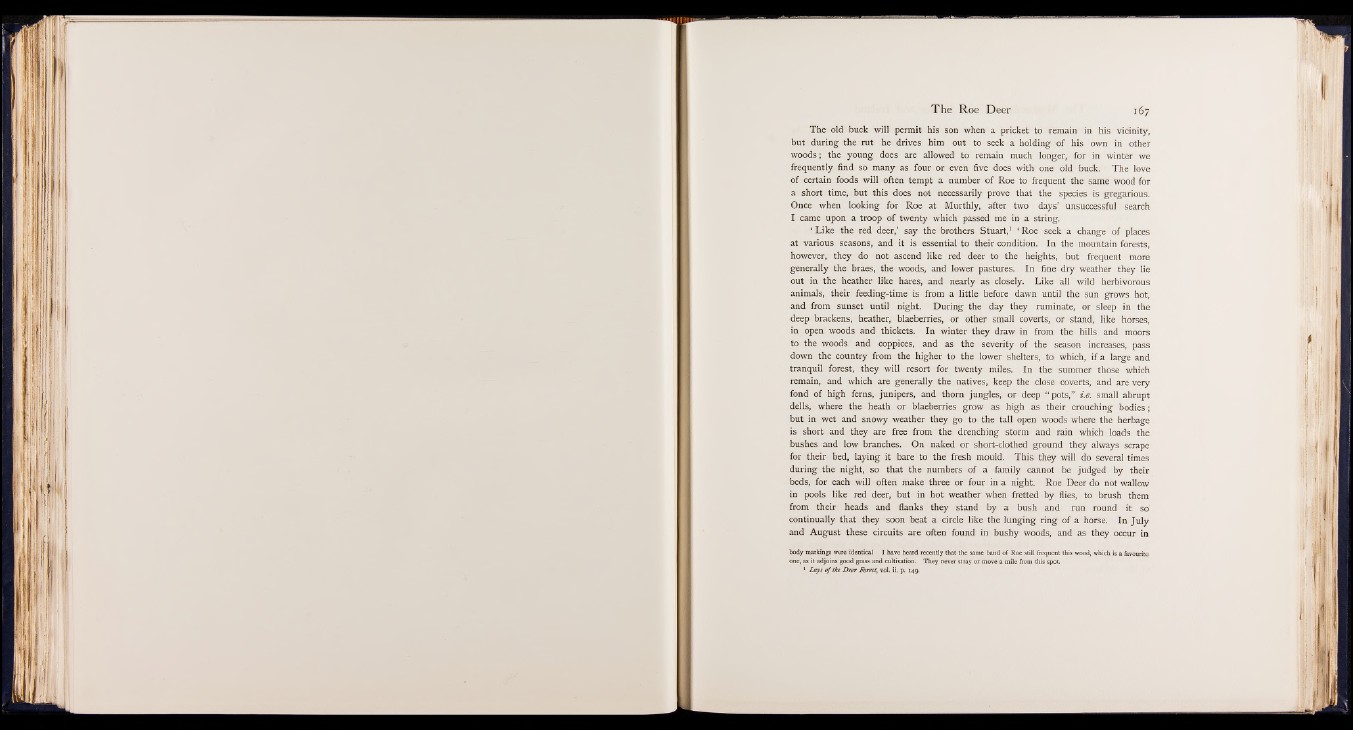
The old buck will permit his son when a pricket to remain in his vicinity,
but during the rut he drives him out to seek a holding of his own in other
woods; the young does are allowed to remain much longer, for in winter we
frequently find so many as four or even five does with one old buck. The love
of certain foods will often tempt a number of Roe to frequent the same wood for
a short time, but this does not necessarily prove that the species is gregarious.
Once when looking for Roe at Murthly, after two days’ unsuccessful search
I came upon a troop of twenty which passed me in a string.
‘ Like the red deer/ say the brothers Stuart,1 ‘ Roe seek a change of places
at various seasons, and it is essential to their condition. In the mountain forests,
however, they do not ascend like red deer to the heights, but frequent more
generally the braes, the woods, and lower pastures. In fine dry weather they lie
out in the heather like hares, and nearly as closely. Like all wild herbivorous
animals, their feeding-time is from a little before dawn until the sun grows hot,
and from sunset until night. During the day they ruminate, or sleep in the
deep brackens, heather, blaeberries, or other small coverts, or stand, like horses,
in open woods and thickets. In winter they draw in from the hills and moors
to the woods and coppices, and as the severity of the season increases, pass
down the country from the higher to the lower shelters, to which, if a large and
tranquil forest, they will resort for twenty miles. In the summer those which
remain, and which are generally the natives, keep the close coverts, and are very
fond of high ferns, junipers, and thorn jungles, or deep “ pots,” i.e. small abrupt
dells, where the heath or blaeberries grow as high as their crouching bodies;
but in wet and snowy weather they go to the tall open woods where the herbage
is short and they are free from the drenching storm and rain which loads the
bushes and low branches. On naked or short-clothed ground they always scrape
for their bed, laying it bare to the fresh mould. This they will do several times
during the night, so that the numbers of a family cannot be judged by their
beds, for each will often make three or four in a night. Roe Deer do not wallow
in pools like red deer, but in hot weather when fretted by flies, to brush them
from their heads and flanks they stand by a bush and run round it so
continually that they soon beat a circle like the lunging ring of a horse. In July
and August these circuits are often found in bushy woods, and as they occur in
body markings were identical I have heard recently that the same band of Roe still frequent this wood, which is a favourite
one, as it adjoins good grass and cultivation. They never stray or move a mile from this spot
1 Lays o f the Deer Forest\ vol. ii. p. 149.